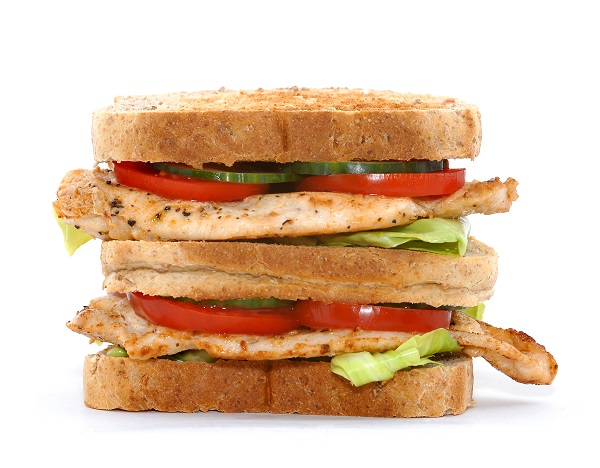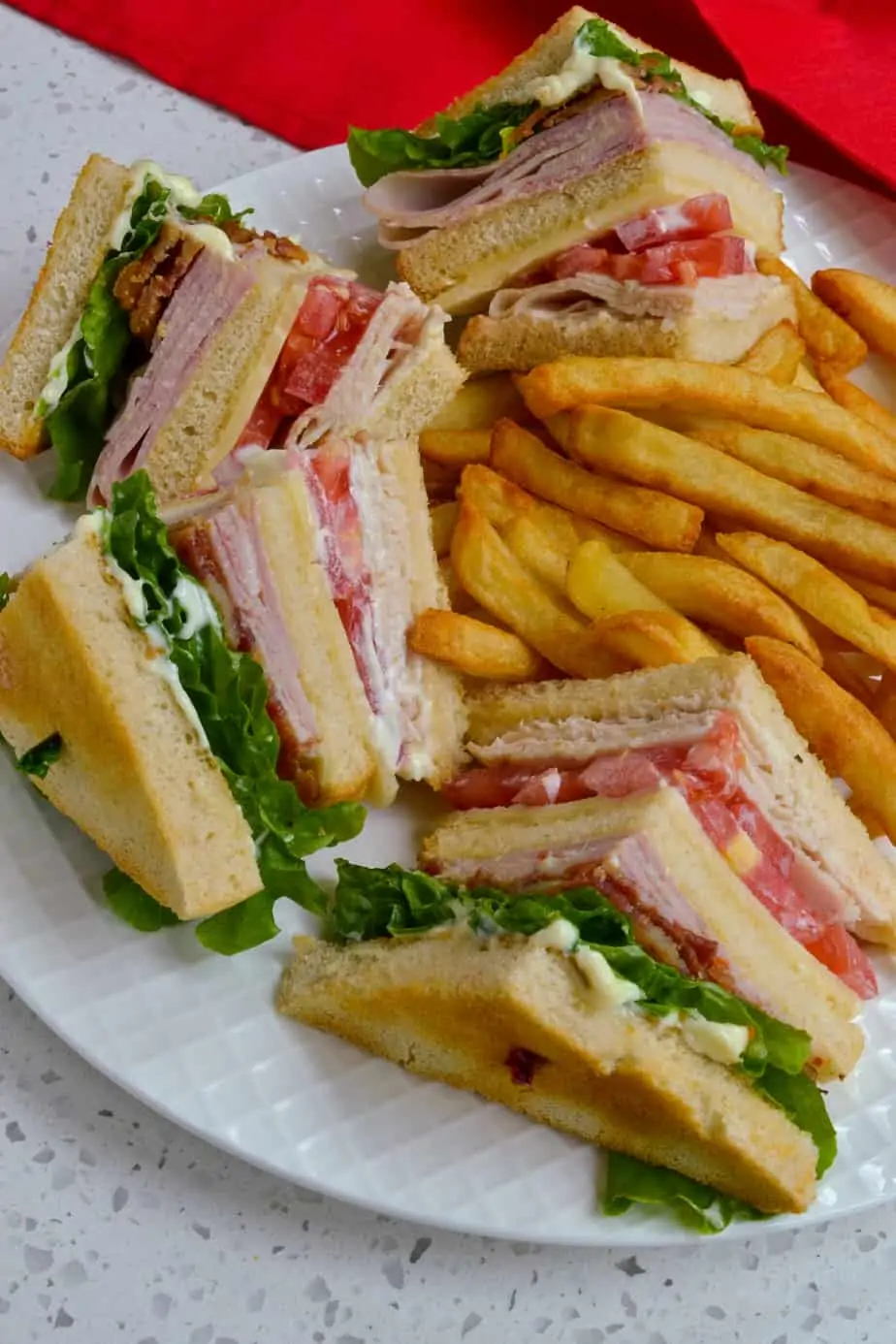The Club Sandwich: A Culinary Classic Reimagined

The club sandwich. A seemingly simple creation, yet a testament to the power of perfectly balanced ingredients and masterful execution. More than just a lunchtime staple, it’s a culinary icon, a testament to American ingenuity and a canvas for endless creative variations. This seemingly humble sandwich, with its layers of toasted bread, tender meats, crisp lettuce, and creamy mayonnaise, has captivated palates for over a century, evolving from its humble beginnings into the diverse and delicious sandwich we know and love today.
A History Steeped in Layers:
Pinpointing the exact origin of the club sandwich is a task akin to untangling a particularly intricate knot. While various claims exist, the most widely accepted narrative places its birth in the late 19th century, within the exclusive confines of gentlemen’s clubs in New York City. These opulent social hubs, with their air of sophistication and leisurely lifestyles, provided the perfect breeding ground for such a refined and satisfying meal.
The story goes that members, seeking a hearty yet elegant midday repast that wouldn’t disrupt their afternoon activities, demanded a sandwich that was both substantial and sophisticated. The result was a carefully constructed masterpiece: layers of toasted bread, typically white bread, filled with thinly sliced roasted turkey or chicken, crisp bacon, lettuce, tomato, and mayonnaise. This combination, far from being a mere assemblage of ingredients, represented a harmonious blend of textures and flavors, a balance that has remained the hallmark of the club sandwich to this day.
The precise recipe, however, varied from club to club, a testament to the individual tastes and preferences of its creators. Some incorporated different meats, such as ham or roast beef, while others experimented with additions like cheese or even hard-boiled eggs. This early diversity foreshadowed the endless possibilities that would later define the club sandwich’s evolution.
The transition from exclusive clubhouses to the broader public was gradual. As the 20th century dawned, the club sandwich began to appear on restaurant menus, its reputation preceding it. Its appeal transcended social boundaries, becoming a popular choice for both casual diners and discerning gourmands. The rise of fast-food chains further solidified its place in the culinary landscape, albeit with some compromises in quality and ingredients.
The Anatomy of a Perfect Club Sandwich:
The beauty of the club sandwich lies not only in its ingredients but also in its meticulous construction. It’s a symphony of textures and tastes, a carefully orchestrated balance of crispness, tenderness, and creaminess. The key elements are:

The Bread: Traditionally, white bread is used, its soft texture providing a neutral backdrop for the bolder flavors of the filling. However, variations using whole wheat, sourdough, or even brioche are becoming increasingly popular, each offering a unique flavor profile. The bread should be lightly toasted, adding a satisfying crunch without becoming overly hard.
-
The Meat: The choice of meat is a matter of personal preference, but the classics remain turkey, chicken, and ham. Roast beef is another popular option, its rich flavor adding a hearty dimension to the sandwich. The meat should be thinly sliced, ensuring even distribution and preventing the sandwich from becoming too bulky.
-
The Bacon: Crisp bacon is an essential component, providing a salty, smoky counterpoint to the other ingredients. Its texture adds a welcome crunch, enhancing the overall sensory experience.
-
The Lettuce and Tomato: Crisp lettuce, typically iceberg or romaine, and ripe tomato slices add freshness and juiciness. The contrast in textures and flavors is crucial, preventing the sandwich from becoming monotonous.

-
The Mayonnaise: Mayonnaise acts as the binding agent, holding the layers together and adding a creamy richness. It also helps to prevent the sandwich from becoming dry. The quality of the mayonnaise is important; a good-quality mayonnaise will enhance the overall flavor.
-
The Cut: The club sandwich is traditionally cut into triangles, a presentation that enhances its visual appeal and makes it easier to eat. This distinctive cut is almost as iconic as the sandwich itself.

Beyond the Classics: Creative Variations:
While the traditional club sandwich remains a timeless classic, culinary creativity knows no bounds. Modern interpretations have expanded the possibilities, incorporating a wide array of ingredients and flavor combinations. Some popular variations include:
-
The Vegetarian Club: Substituting the meat with grilled vegetables, such as portobello mushrooms, zucchini, or eggplant, creates a satisfying vegetarian alternative. Halloumi cheese can also add a delightful salty and tangy element.
-
The Gourmet Club: Elevating the sandwich with premium ingredients, such as smoked salmon, avocado, or gourmet cheeses, transforms it into a luxurious treat. Truffle mayonnaise can add an extra touch of decadence.
-
The Spicy Club: Adding jalapeños, chipotle peppers, or a spicy mayonnaise can introduce a welcome kick, adding a layer of heat to the classic profile.
-
The Global Club: Exploring international flavors, such as incorporating Korean bulgogi, Italian prosciutto, or Mediterranean falafel, can open up a world of culinary possibilities.
The Club Sandwich Today:
The club sandwich continues to hold a prominent place in the culinary world, adapting and evolving to meet the demands of modern palates. From upscale restaurants offering gourmet versions to casual diners serving classic iterations, its enduring appeal remains undeniable. Its adaptability allows for endless variations, catering to diverse tastes and preferences.
The club sandwich is more than just a sandwich; it’s a symbol of culinary heritage, a testament to the enduring power of simple ingredients combined with meticulous craftsmanship. It’s a versatile canvas for creativity, a blank slate upon which culinary artists can paint their masterpieces. Whether enjoyed as a classic rendition or a modern reimagining, the club sandwich remains a timeless delight, a culinary experience that continues to captivate and satisfy generations.
Tips for Making the Perfect Club Sandwich:
- Use high-quality ingredients: The taste of the final product hinges on the quality of its components. Invest in good bread, meat, and mayonnaise.
- Toast the bread lightly: Over-toasting will result in a hard, dry sandwich. Aim for a golden brown color.
- Slice the ingredients thinly: This ensures even distribution and prevents the sandwich from becoming too bulky.
- Don’t overload the sandwich: Too many layers will make it difficult to eat and may compromise its structural integrity.
- Use a good quality mayonnaise: This will significantly impact the overall flavor and texture of the sandwich.
- Cut the sandwich into triangles: This is a classic presentation that enhances the visual appeal.
- Serve immediately: A freshly made club sandwich is the most enjoyable.
The club sandwich, in its simplicity and elegance, stands as a testament to the enduring power of culinary tradition. Its adaptability ensures its continued relevance in a constantly evolving culinary landscape, promising to delight and satisfy for many years to come. So, the next time you find yourself craving a satisfying and delicious meal, remember the enduring charm of the club sandwich, a culinary classic that deserves a place in every food lover’s heart.

Video tentang The Club Sandwich: A Culinary Classic Reimagined
Penutup
Therefore, we hope this article has provided valuable insights on The Club Sandwich: A Culinary Classic Reimagined. We thank you for the time you spent reading this article . See you in our next article!

